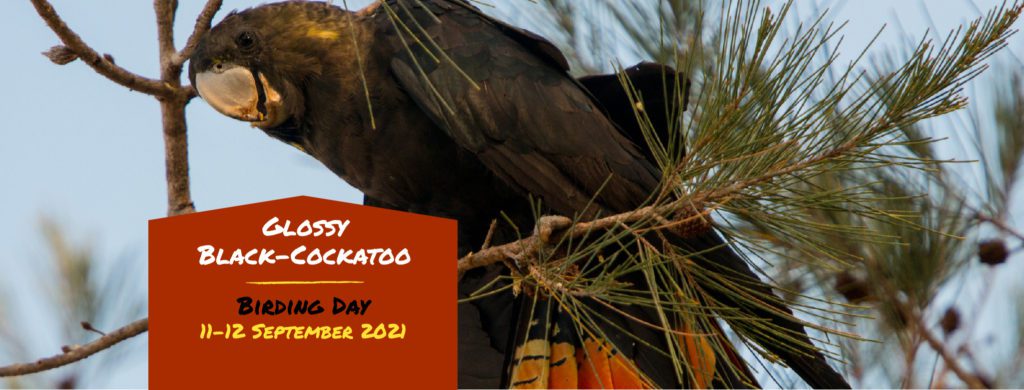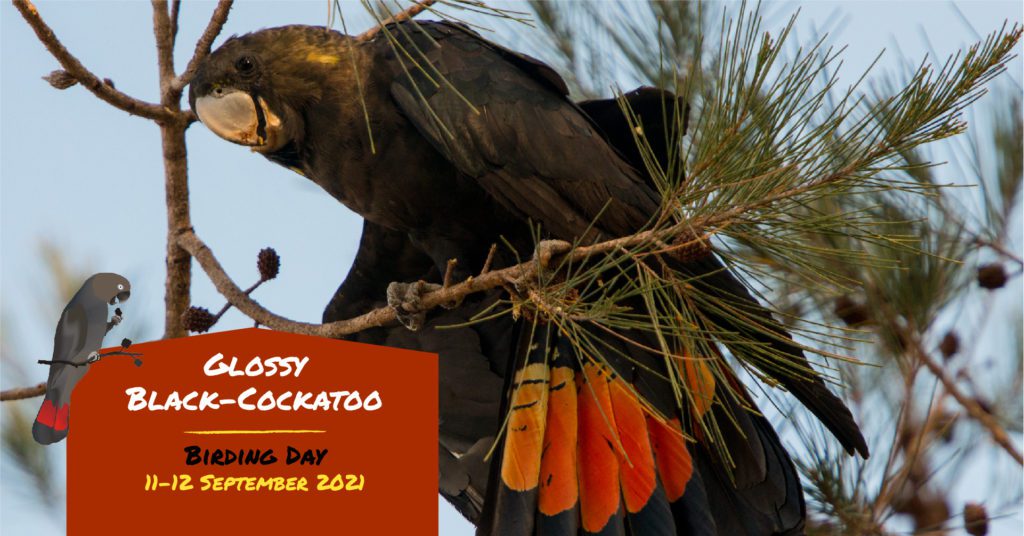Each year, we call on bird lovers across Southeast Queensland and North-eastern NSW to help gather data about one of Australia’s rarest and smallest cockatoos – the Glossy Black-Cockatoo. Everyday people and experienced birders alike will come together this September to learn how to identify this charismatic bird, identify feed trees, recognise signs of feeding and to record bird behaviour.

This year, our annual Birding Day is taking place over a whole weekend to give even more people the chance to get out and about in nature and help collect important data that feeds into policy and planning for the survival of this threatened bird. Data helps us build a greater understanding of how and where this vulnerable species lives and helps scientists identify and maintain the magnificent bird’s habitat across Southeast Queensland and North-eastern NSW.
Register to volunteer for the Glossy Black-Cockatoo Birding Day, 11 – 12 September across Southeast Queensland and North-Eastern NSW.
Glossy Black-Cockatoos are distinguished from other black-cockatoos in the region by their smaller size, large, powerful beaks and striking red panels in the tail feathers of adult males, but most people identify them by their unique call. They are typically seen flying in pairs or groups of three but often gather in large groups around waterholes. They feed exclusively on the seeds of she-oak trees, otherwise known as casuarinas.
The Glossy Black Conservancy coordinates the annual Birding Day and is an alliance of local councils, conservationists, scientists and community organisations who share a common goal of working towards securing the Glossy Black-Cockatoo’s future in Southeast Queensland and North-eastern NSW.
While we’re seeking volunteers to join us for our annual Birding Day, Glossy Black-Cockatoo sightings can be recorded anytime at glossyblack.org.au.
In the past 11 years, nearly 8000 Glossy Black-Cockatoos have been reported through our online portal. 688 birds have been sighted during our annual Birding Days and 1387 volunteers have contributed their time and expertise to our bird count efforts.
To register as a volunteer, visit http://bit.ly/GBCvolunteer.

